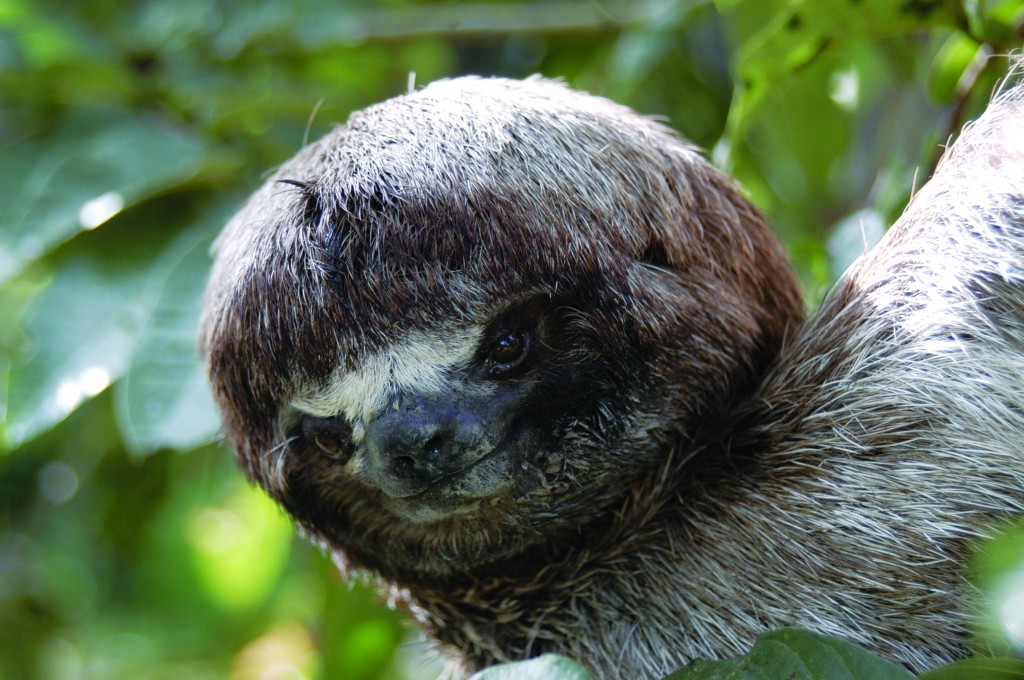Sloths are really quite unique and live in trees for most of their lives. Sloths only move when necessary and even then very slowly. All five species of this medium sized mammal are found only in the neotropics; the two Costa Rican species are the brown-throated three-toed sloth and Hoffman’s two-toed sloth. The three-toed sloth is more commonly sighted compared with the two-toed sloth which is mostly nocturnal. Sloths have short flat heads, big eyes, a short nose and tiny ears. They have long limbs which end in feet with curved claws that they use as hooks to hang from tree branches and normally they have a stubby tail. They are related to anteaters, which sport a similar set of specialised claws.
They typically sleep for around 10 hours a day and their sense of smell is far more acute than their eyesight or hearing. In moist conditions, the coats of both species may have a greenish tinge which is caused by the algae that grows in the fur and help camouflage them in the trees. Sloths fur can also be a good home to moths and beetles. Their fur is long and stiff, producing a shaggy look.
Sloths often hang motionless from branches or seen slowly climbing upside down along a branch towards leaves, which are their primary food. Digestion of this tough food can take a month or more and sloths defecate at the base of a tree about once a week. Biologists are not sure why they do this; one theory is that by defecating at the base of a particular tree, the sloth provides fertilizer that increases the quality of the leaves of that tree, thus improving the sloth’s diet! They switch trees normally only once every two days. They are rarely sighted on the ground, where their gait is clearly uncomfortable. On the ground they are also more vunerable and prey for a variety of predators such as snakes, large cats and eagles. I have seen a sloth swimming in the canals of Tortuguero in Costa Rica and they are competent swimmers!
Females are sexually mature from three years and normally bear one baby every year. The baby is carried on the mother’s chest for 6-9 months, feeding on milk for a few weeks but is soon taught to eat leaves. Some favourite leaves are from the Cecropia tree which are common trees on riverbanks in the rainforest; this is the best place to spot sloths in the wild. Consuming only leaves provides a nutritionally poor diet and as a result, sloths have very low metabolic rates and relatively low body temperatures. Sloths save energy by reducing their body temperatures to match that of their environment.
There is an excellent Sloth sanctuary near Cahuita in Costa Rica which advocates the protection and rehabilitation of sloths as well as heightening people’s awareness and providing educational information. It is possible to visit the sanctuary and they operate tours.
Lloyd Boutcher,
Director Sunvil Traveller





